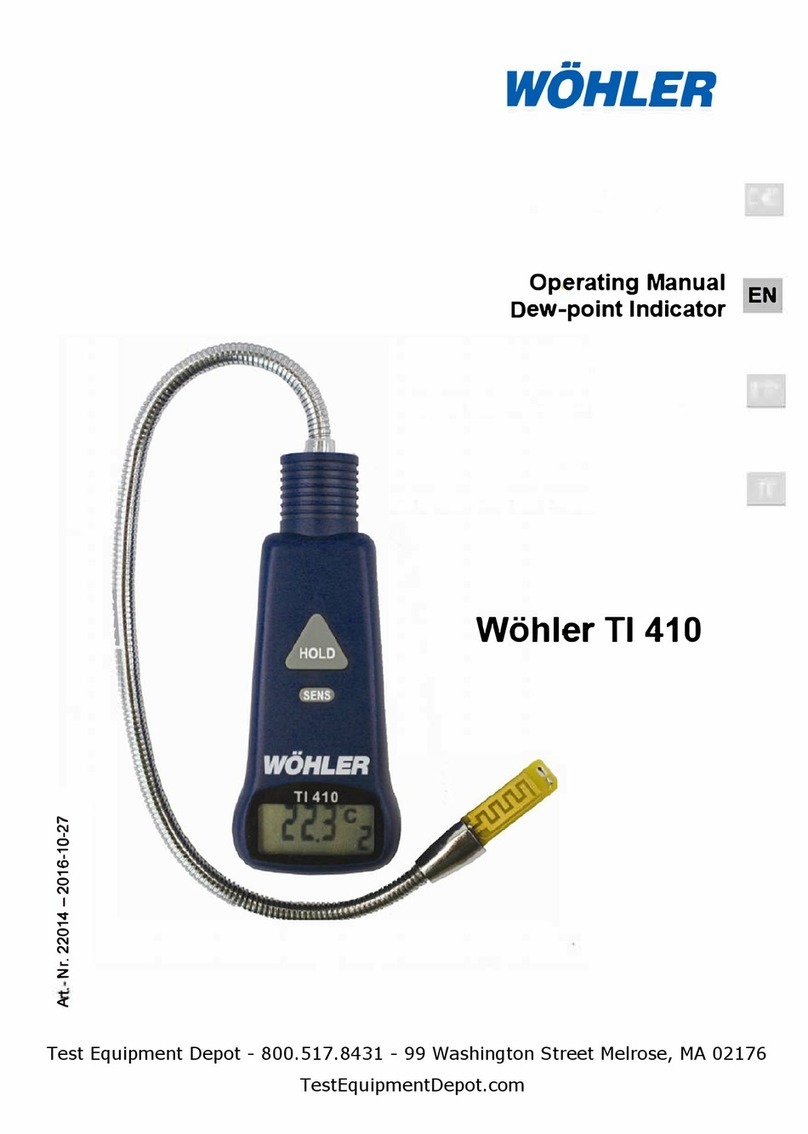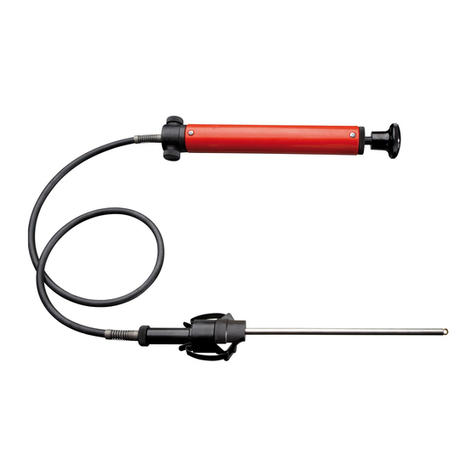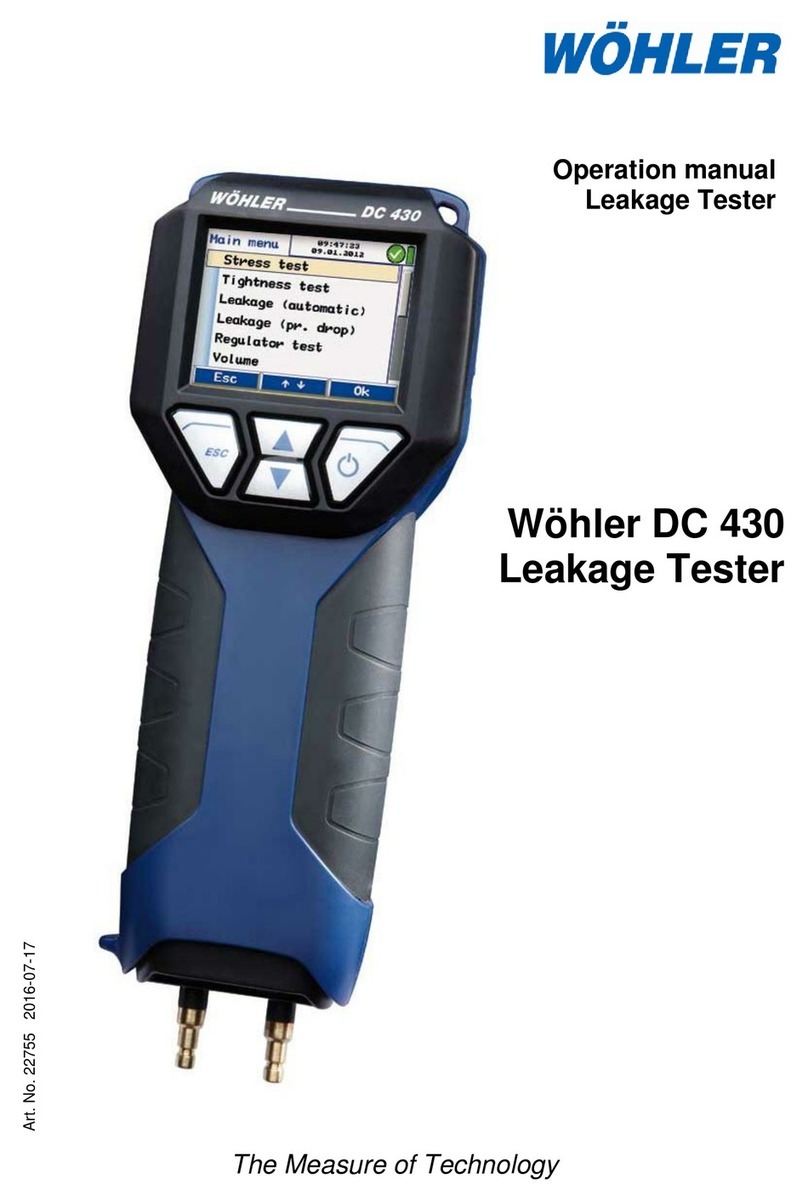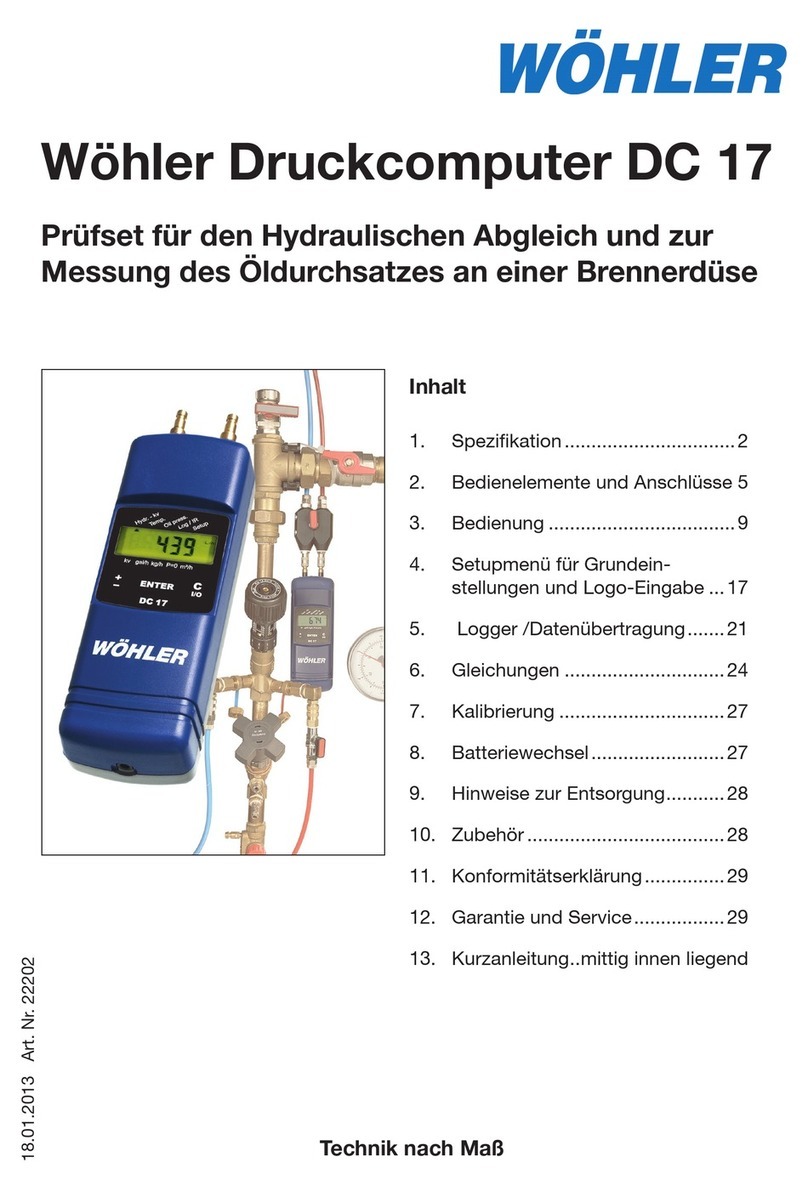
measuring mode
Click mode-key to switch between the measuring
modes methane and propane.
M (methane) or P (Propane) will be displayed in
the upper right corner of the display.
10:
alarm (1) and beep (2)
•Press the alarm key several times until the
required alarm setting is displayed.
A press on the alarm key will successively acti-
vate the vibration alarm and the beep together,
the beep only, the vibration alarm only or it will
turn off the alarm. The correspondent icons will
appear on screen.
The meter beeps every one second to assure the
meter is in normal working status (if the beep has
been activated). The beep frequency will speed
up while the detected gas concentration becomes
higher. While you use the earphone, the meter will
automatically mute but you can hear the beep
through the earphone.
•Approaching the sensor to the pipe, slide
slowly the sensor along the pipe; repeat the
procedure from the other side of the pipe.
When the sensor is near to a leak, the bar graph
display will show the gas concentration and the
beep frequency or the vibration frequency will
increase.
In dark environment the display illumination and
the flash light will switch on automatically.
NOTE!
It is not possible to switch on or off the display
illumination and the flash light manually.
testing
•Ventilate the sensor after each use. Expose
the meter to fresh air for 2 minutes before
starting a new leakage test.
NOTE!
If connecting lines, tools and the meter are stored
in the same case, the gas may evaporate from the
tools. The meter will detect this gas even after
several days.

































